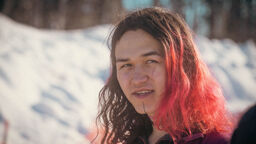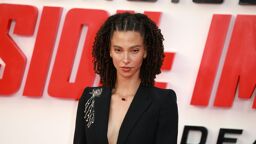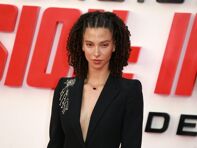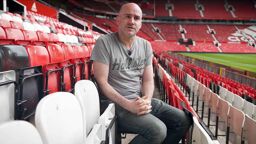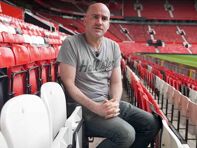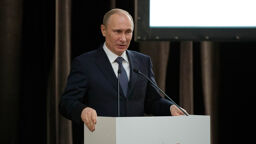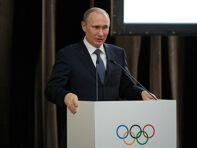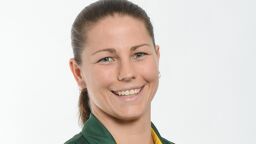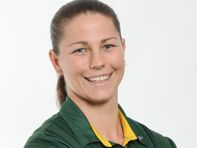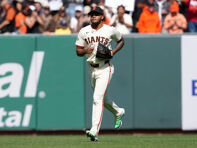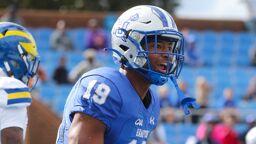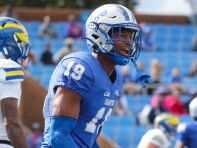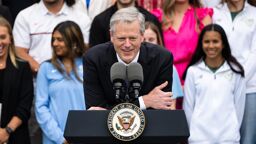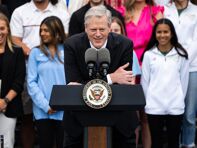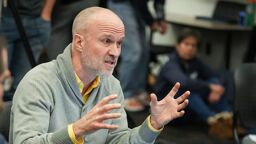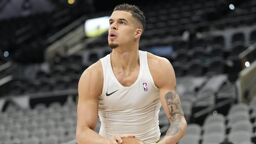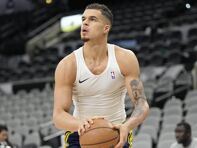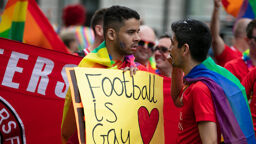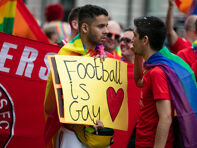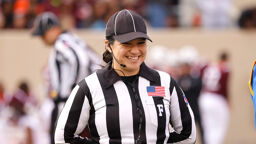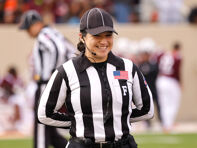In addition to the gold, silver and bronze medals handed out at the 2018 Winter Olympics in Pyeongchang, one with a rainbow would have been fitting.
There were a record number of out LGBTQ athletes at a Winter Olympics (15) and the first publicly out male Winter Olympians (four). This led to the most coverage of out Winter Olympians by the media in history.
Two of the out gay men were high-profile Americans, which intensified the coverage in the U.S. Overnight, skater Adam Rippon became a household name, while skier Gus Kenworthy — though not at Rippon levels of interest — kept the high profile he had in the U.S. prior to the Games.
Everything is relative and admittedly we’re dealing with a low bar. The number of out Olympians — while double that four years ago — is still only one-half of 1% of the nearly 3,000 competitors in Pyeongchang. It is the same percentage as the 56 out Summer Games athletes in 2016.
Having so few out gay men should be more a cause of consternation than celebration, yet their rarity is what made them such a focus in Pyeongchang. Google Trends shows that searches for Adam Rippon soared in the first week of the Games and he remained by far the most searched LGBTQ Olympian, though he was nearly tied in Week 2 by Kenworthy after he kissed his boyfriend on national TV. Kenworthy, who suffered injuries that hampered his skiing and kept him off the podium, got much more attention for things he did off the slopes.
There were certainly newsworthy performances by out athletes not named Rippon or Kenworthy. Dutch speedskater Ireen Wüst won a gold medal for the fourth consecutive Olympics, giving her five golds overall, along with five silvers and a bronze. Brittany Bowe helped the U.S. win its only speedskating medal, a bronze.
Pairs skater Eric Radford was a star in the team competition with partner Meagan Duhamel, helping Canada win the gold; the pair also won a bronze in the pairs individual. Radford became an unofficial ambassador for Pride House, an inspiring symbol of an out and proud athlete. “At Pyeongchang Olympics, Canada made a place for LGBT people, so I think it’s very nice. I came here, and I can see other LGBT people, and an LGBT athlete like Eric Radford. Less lonely,” one young Korean man said after visiting Pride House and meeting Radford.
Out female athletes were shortchanged in the coverage by the American media — both mainstream and LGBTQ — though they outnumbered the men 11 to 4. This isn’t just an Olympics symptom, and it’s something Outsports has been documenting for years. The disparity in coverage isn’t right, but it’s been the reality.
That’s the reason I chose “gayest” in the headline, specifically to make the point that it was the gay part and not the lesbian-bisexual-queer part that got the attention (there were no out trans athletes at these Olympics). I think the main reason for this was nationality of the athletes.
U-S-A-centric focus
Rippon and Kenworthy got the lion’s share of American coverage of LGBTQ athletes — Rippon was by far No. 1 in this category — for two big reasons: They were Americans and they competed in high-profile sports.
Ten of the 11 out women were from European countries, which automatically meant less coverage in the U.S. media. These same athletes were covered in their home countries or by international media like the BBC, but all but ignored in the U.S.
One example of the hyper-American focus: An Associated Press column on the increased gay visibility in the Winter Games mentioned only the three Americans — Rippon, Kenworthy and Bowe — and none of the other 12 out competitors.
There is no event more covered from a nationalistic media bent than the Olympics, which is why, for example, the Norwegian media went nuts over cross-country skiing, the Dutch over speedskating and, the Germans over sliding sports.
Rippon and Kenworthy competed in two sports that get tons of attention in the U.S. at the Winter Games — figure skating and X-Games events like freestyle skiing. There was already a built-in audience for both sports. To have two openly gay men compete in them just added to the interest.
Kenworthy, a silver medalist in Sochi, already had a public profile prior to the start, with many endorsements and by being one of NBC’s faces of the Games in promotions. When he kissed his boyfriend, Matt Wilkas, prior to the start of his event on live TV, it went viral (our Outsports tweet, the first online with a photo, garnered more than 800,000 impressions).
Kenworthy continued to be well-covered even after his event ended, frequently quoted on being an openly gay athlete. The AP even sent a writer and photographer to chronicle his visit to a dog meat farm near Pyeongchang, which had nothing to do with either being gay or an athlete; it was simply a human interest story.

It was Rippon, though, who stole the show.
He was everywhere in the media the first week of the Games, both for how he performed on the ice (bronze medal in team skating) and for his personality off it. He is a quote machine and seemed to charm everyone who interviewed him. How much were people interested in Rippon? Searches for “Adam Rippon” on Google the past month yielded 2.5 million hits, higher by a factor of five than any other out athlete.
Rippon’s rise from obscurity (he admits he was broke five years ago) began prior to the Games when he got into a spat with Vice President Mike Pence. Nothing will raise an athlete’s profile higher than getting into a back-and-forth with a prominent politician.
Rippon also benefited from the team and men’s skate being held in the first week, at a time when Olympics interest is highest. And his savvy on social media for posting just the right thing and saying the perfect soundbite in interviews got him play everywhere, from sports media to entertainment, news and even business-oriented outlets.
“Welcome to the Adam Rippon Show” was Deadspin’s dead-on headline that summed up the media frenzy he created.
Rippon saw an opportunity and he grabbed it. His life is now changed forever. The Los Angeles Times documented how very few Olympians can cash in after the Games end but noted that Rippon was likely to be one of the exceptions.
In contrast to Kenworthy and Rippon, speedskater Bowe was out in a more quiet way and preferred to keep her focus on her sport, not her personal life. “I hope the way that I carry myself and the way that I present myself allows people to also think that they can carry themselves the way they want to carry themselves and the way that they want to express themselves, and do what makes them happy,” Bowe told AP.
She was not hiding who she is and posted some great images of herself with Rippon and Kenworthy, but she never engaged the media in the way that raised her visibility. And, perhaps more importantly these days, she never took a political stand as did Rippon and Kenworthy, the kind of thing that breaks through on social media.
Stereotypes die hard
While Rippon and Kenworthy benefited most by being high-profile Americans, the fact that they were gay men also made them deemed more newsworthy by the media. For decades — though it has rapidly changed in recent years — the stereotype was that gay men weren’t “masculine” enough to be top athletes, so to see any men come out in elite sports becomes news for how rare it is.
In contrast, stereotypes hold that lesbians flock to sports, ignoring the prejudices out women still face in sports. So when a women comes out, it doesn’t have the perceived newsworthiness. Outsports has documented this disparity in coverage since we started. One example: Jason Collins, then a free agent near the end of his NBA career, came out and it was front-page news and even discussed by President Obama. Brittney Griner, a college and WNBA superstar, came out at roughly the same time and it got a fraction of the attention given Collins.
I think the stereotypes — while still present — had less to do with the lopsided Olympics coverage afforded Rippon and Kenworthy than their nationality. In 2016, the four out members of the U.S. women’s gold medal basketball team got a good amount of attention because of their nationality and the fact they were really good. Had a member of the U.S. women’s hockey team being publicly LGBT, she also would have been a central focus of coverage, especially after the team won the gold medal.
The next Olympics are 29 months away in Tokyo, and I hope there are so many out LGBTQ Summer Olympians that it won’t be necessary to focus on only a few.



